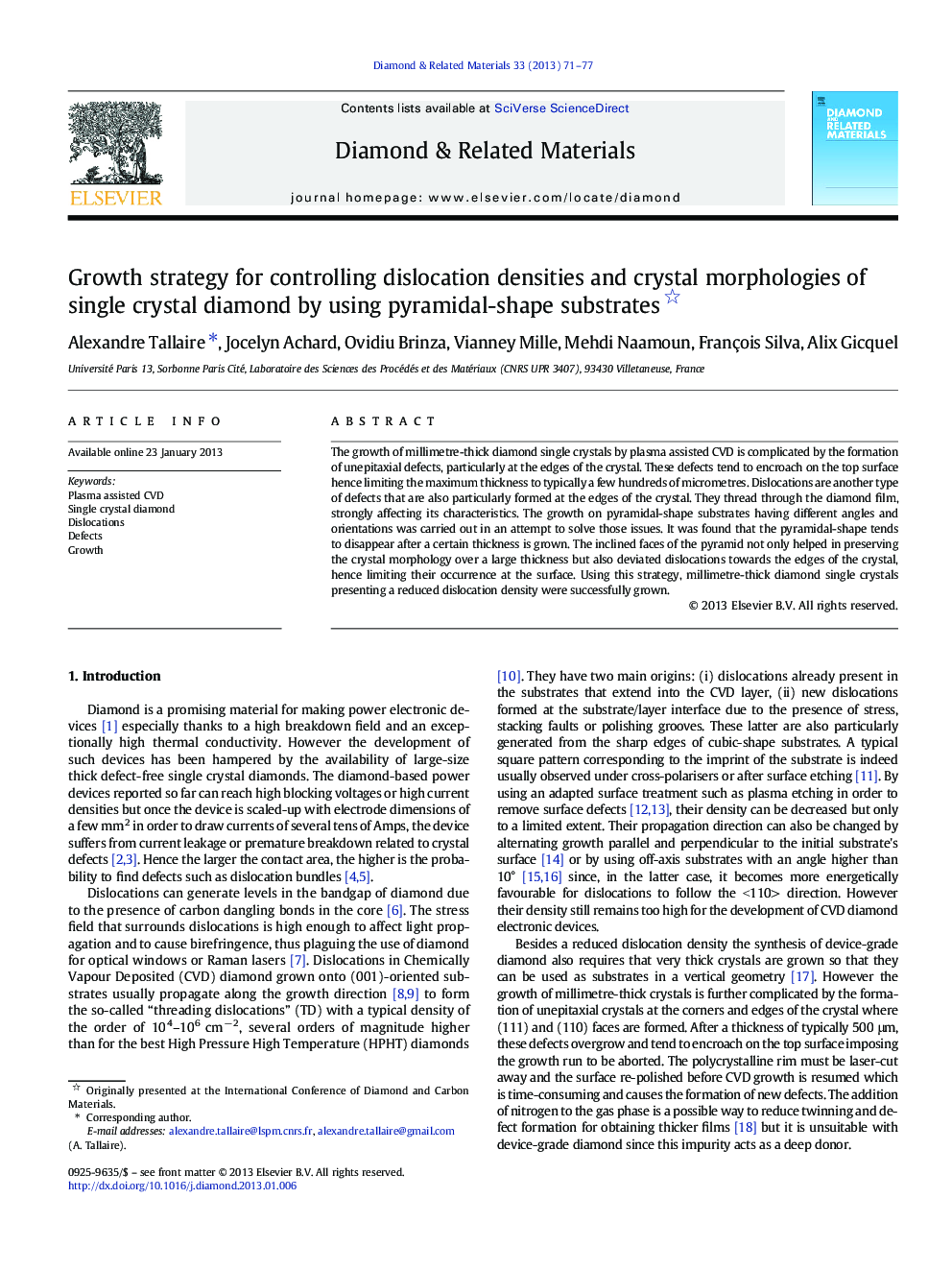| Article ID | Journal | Published Year | Pages | File Type |
|---|---|---|---|---|
| 701830 | Diamond and Related Materials | 2013 | 7 Pages |
The growth of millimetre-thick diamond single crystals by plasma assisted CVD is complicated by the formation of unepitaxial defects, particularly at the edges of the crystal. These defects tend to encroach on the top surface hence limiting the maximum thickness to typically a few hundreds of micrometres. Dislocations are another type of defects that are also particularly formed at the edges of the crystal. They thread through the diamond film, strongly affecting its characteristics. The growth on pyramidal-shape substrates having different angles and orientations was carried out in an attempt to solve those issues. It was found that the pyramidal-shape tends to disappear after a certain thickness is grown. The inclined faces of the pyramid not only helped in preserving the crystal morphology over a large thickness but also deviated dislocations towards the edges of the crystal, hence limiting their occurrence at the surface. Using this strategy, millimetre-thick diamond single crystals presenting a reduced dislocation density were successfully grown.
Graphical abstract1.7 mm thick freestanding diamond crystal grown by CVD on a pyramidal-shape substrate.Figure optionsDownload full-size imageDownload as PowerPoint slideHighlights► Growth on pyramidal substrates with various angles and orientations. ► Dislocations are deviated away towards the edges of the crystal. ► Crystal morphologies are much improved and millimetre-thick high purity diamond can be grown.
